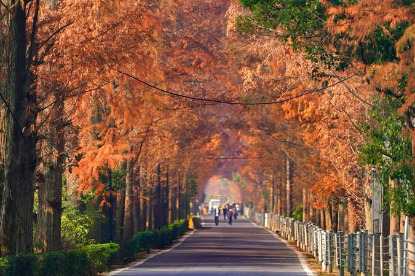A 10-day exploration of Wuhan in Hubei province

Day 9
Yangtze River Civilization Museum

Opened to the public in 2015 and covering 310,000 square meters, the Yangtze River Civilization Museum boasts a collection of 9,141 cultural relics, artifacts, and fossil specimens.
A permanent exhibition themed on the Yangtze River and its ecology showcases the natural environment and history of the Yangtze River through typical cultural relics and specimens from the basin of the Yangtze River, such as specimens of giant pandas, the endangered Chinese sturgeon, the Chinese dove tree (davidia involucrate) which is dubbed the "living fossil" of plants, and Tibetan Tangka, bronze drums, and Liangzhu jadeware.
The museum’s exhibition hall has also created a large immersive program to enable visitors to get a good introduction to the natural beauty and cultural landscapes of the Yangtze River within 10 minutes.
By the end of 2019, the Yangtze River Civilization Museum had received 3.5 million visits and was highly praised by UNESCO.
East Lake Scenic Area, Wuhan

East Lake is located on the south bank of the Yangtze River and the eastern suburbs of Wuhan city. It covers an area of 88 square kilometers, which is five times larger than West Lake in Hangzhou.
Because of its winding banks and crisscrossing ponds and brooks, it is called “a lake with 99 bays”. The East Lake Scenic Area includes many famous scenic spots along the bank.
The six major areas are Tingtao (Listening to Surging Waves), Mo Hill (Millstone Hill), Luoyan (Diving Wild Goose), Baima (White Horse), Chuidi (Playing Flutes), and Luohong Hills. Tingtao and Mo Hill scenic areas are the most notable. They are currently open to visitors.
Tingtao scenic area features rare sequoia trees which are especially elegant in late autumn. Listening-to-the-Waves Tower (Tingtao Xuan) is one of the most famous buildings in this area.
Located at the center of this area is the Poetry-Reciting Pavilion (Xingyinge). The pavilion was built in memory of Qu Yuan, the great patriotic poet of the ancient State of Chu[dates]. Many exhibits about Qu Yuan are featured in this building, including his great literary masterpieces. In addition, the first allegory sculpture park in China displays wonderful sculptures.
Characterized by beautiful landscapes, abundant plants, the customs of the State of Chu and unique gardens, Mo Hill Scenic Area attracts many tourists. The Chu cultural theme park is very popular.
Besides these, the Bird Forest with 200 kinds of birds, the mysterious East Lake Ocean Park, and Wuhan University are all worth a visit.
What make the East Lake Scenic Area so impressive are its recreational facilities: the exciting slide way, the ropeway, the yachts, tandem bikes, the skating rink and the pleasure ground for children.
As Wuhan has a subtropical monsoonal climate with four distinct seasons, the ideal months to visit are March to April and September to October. Try to avoid the scorching summer heat of July and August, and the cold winter from November to late January.
Festival periods such as the Wuhan International Tourist Festival (Sep-Oct), Plum Blossom Festival (Feb-Mar) are the best times to visit the East Lake Scenic Area.
Last Updated: May 13, 2025




